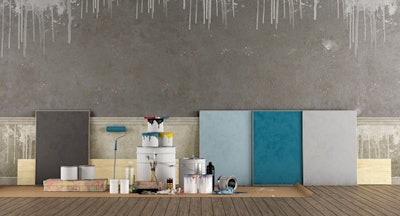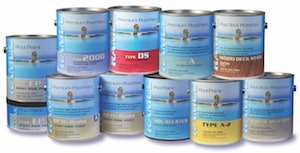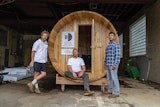
Paint has been around since the beginning of time — it was used to write messages on the walls of caves, painted on ceilings of the Roman aqueducts and currently on jaw dropping waterslides. Paint is one of the few substances that has grown and evolved along with mankind.
Components of Paint:
Modern paint’s basic purpose hasn’t changed from that of our ancestors: it is designed to apply color in a liquid form and dry to a solid, adhering to the surface. Yet it has exploded in many possibilities and purposes: these possibilities vary depending on the chemical composition, which is based on four main components:
- The pigment adds color, and controls the sheen, color retention and resistance to dirt and abrasions. Extender pigments add additional functionality and are particularly useful where they help to prevent mildew and corrosion.
- The binder holds all the components together. It helps provide adhesion and durability.
- The binder and pigment are carried in a solvent. The solvent can be either water or a “thinner.” In most paints the solvent will evaporate leading to drying. As the drying occurs, the solvents keep the pigments and binders in solution and help them penetrate the surface being painted. After the solvents have evaporated a thin hard layer of pigment and binder remain, known as “Paint.”
- Additives are used to enhance certain properties, and can make a paint thicker or help it to withstand temperature extremes, UV rays, chemical changes and so forth.
Different Types of Paint

Epoxy provides a long-lasting finish — up to eight years — while resisting chemicals, stains and abrasion. It is best used on unpainted surfaces, or on aquatic fixtures that were previously coated with epoxy paint.
Rubber-based paint is known for providing coverage and protection. These paints have undergone many changes over the past few years to comply with VOC regulations. Synthetic rubber has become a popular alternative to chlorinated rubber based paint, based on environmental awareness.
Acrylic pool paints are very versatile and can be applied over a wide variety of previously painted surfaces. Our Type DS can be applied even in damp environments — minimizing down time.
Paint or Plaster?
|
To determine the type of paint on an existing surface, submit a chip sample to RAMUC for analysis. |
There are two common options for resurfacing a pool — paint or plaster. Plaster is an expensive and time-consuming process. It can last many years but is prone to deterioration due in part by inconsistent water chemistry. Due to its porosity, plaster coatings develop surface cracks, stains and pitting. If a pool has an existing plaster finish and needs resurfacing, it is a burdensome process to remove the existing plaster and perform in-depth preparation for the new plaster application. Anticipate a lengthy process with a crew of technicians using heavy-duty equipment.
Today’s pool coatings are designed to address the multiple conditions encountered by submerged environments. Applying a pool specialty coating is an efficient and cost-effective means of refinishing a pool. Prices vary but research shows painting is a fraction of the cost of re-plastering, a less complex process and requires a shorter down time.
Indeed, applying paint to a pool requires proper preparation and a typical pool will take several hours when done by a two people. The surface must be clean, sound and void of loose or flaking paint or plaster.
What Type of Paint?
Select the coating based upon the type of paint that already exists on the surface. To determine the type of paint on an existing surface, submit a chip sample to RAMUC for analysis and a recommendation for which product to use.
RAMUC Pool Specialty Coating are self-priming, saving time and money. Service life varies upon the type of coating selected, and runs the gamut of two years for an acrylic to eight years (or more) for an epoxy. Whether you select epoxy, rubber-based or acrylic, we have a coating to meet an array of needs in a variety of colors. Choose to paint a pool and achieve a beautiful, long lasting finish that will provide years of enjoyment and satisfaction. For more information, visit ramucpoolpaint.com











































